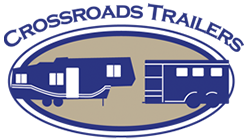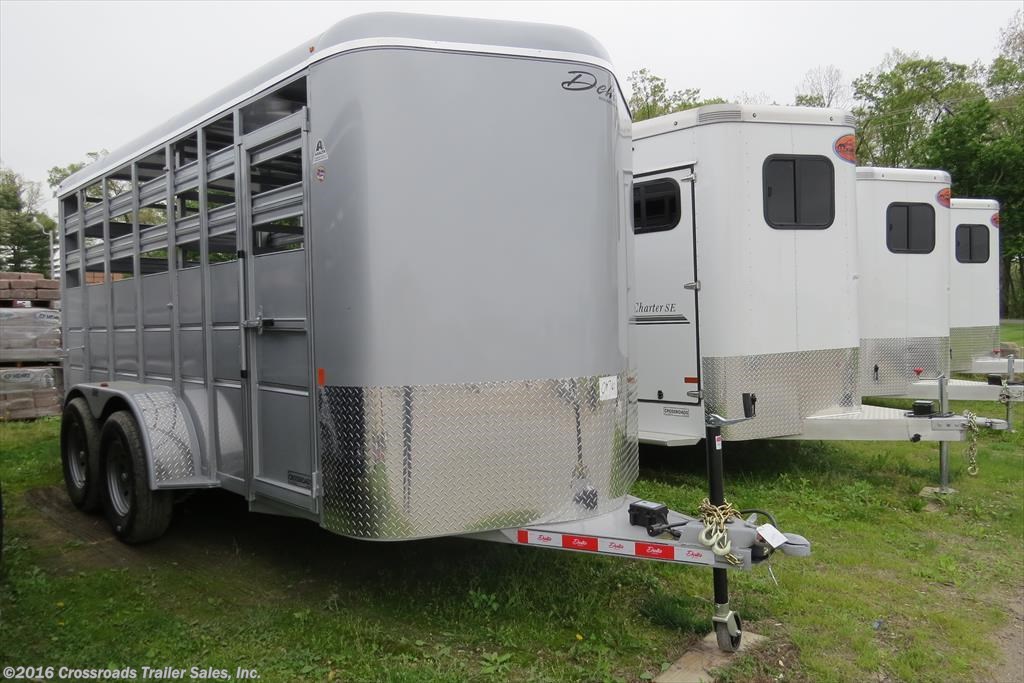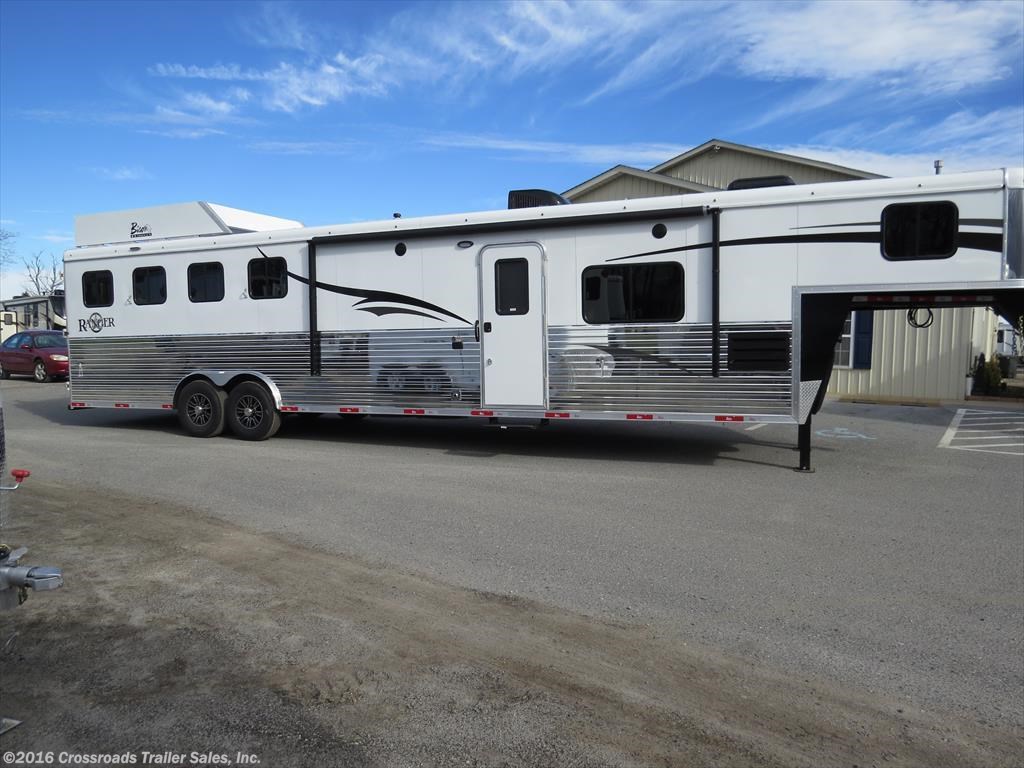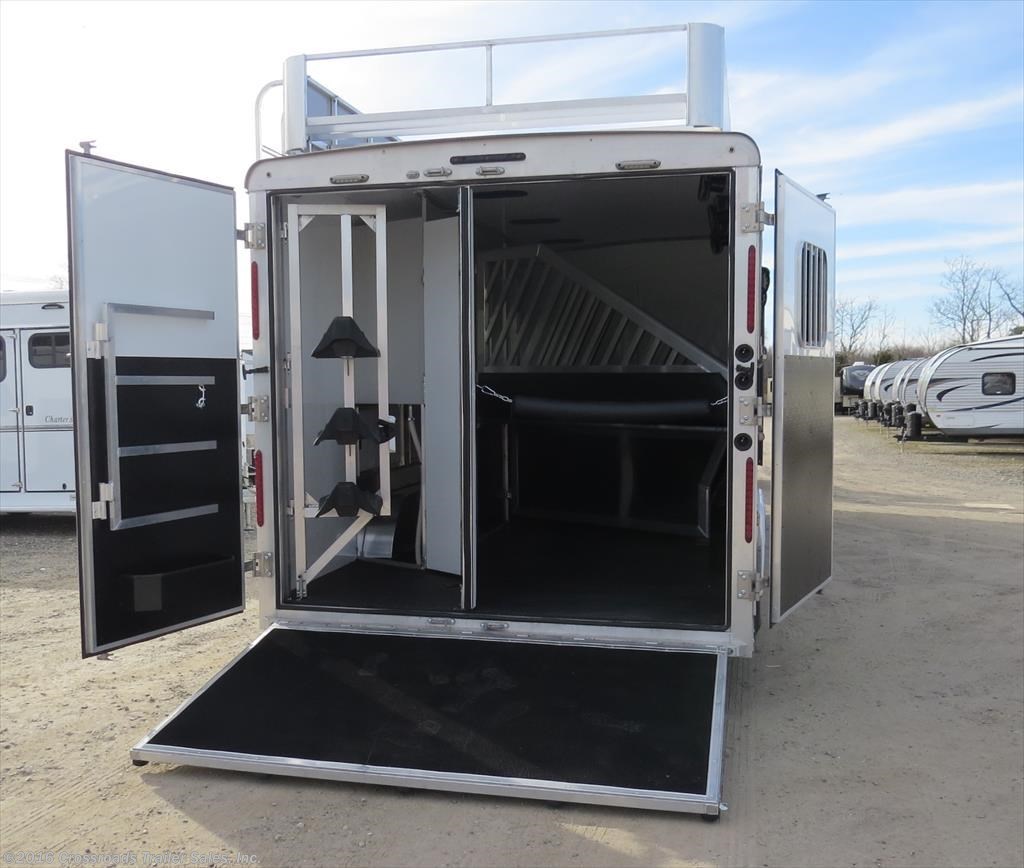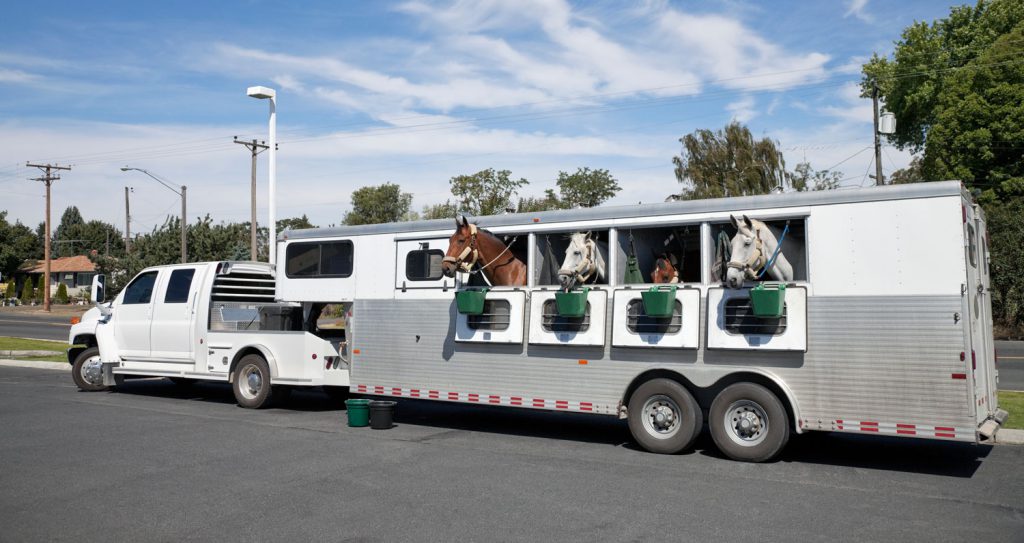 Buying a horse trailer is a big decision that impacts the safety of your equine charges, the ease and safety of your travel and, of course your wallet. With thousands of models to choose from, at all price points, let your needs inform your decision with these 5 tips for buying a horse trailer.
Buying a horse trailer is a big decision that impacts the safety of your equine charges, the ease and safety of your travel and, of course your wallet. With thousands of models to choose from, at all price points, let your needs inform your decision with these 5 tips for buying a horse trailer.
The Right Size for Your Horse
Understand what’s right for your horse or horses. No matter how fancy a trailer looks, or what a great deal it is, if your horses can’t travel safely and comfortably, it’s not the trailer for you. Measure your horse or horses from tip to tail and shoulder to shoulder to make sure any trailer you’re looking at is a good fit. Your horse needs to be able to spread its legs and have room to use its head and neck for balance to travel safely. Measure your prospective trailer purchase to check for head room – remembering that trailers with curved roof may consider the peak of the roof the trailer’s height, while your horses head may be closer to the outside wall. When checking the floor measurements, take into consideration wheel wells, which may steal some of your horse’s standing room.
The Right Size for You
The right trailer will not only be comfortable for your horse, it can be towed safely behind your vehicle, hold all the gear you need for your equine adventures, and be right for your lifestyle. With choices ranging from small single-horse bumper towed trailers to slant five fifth wheel living quarter models, understand, your needs and towing capabilities. A bumper towed trailer is the simplest and least expensive horse trailers, but may not be up to the weight of your load and has limited storage. The lightest bumper towed trailers can be towed by a small truck of SUV. A gooseneck trailer, which uses a ball hitch in a truck bed, offers a more stable tow and distributes the weight of your trailer across the center axle of your truck. Many have tack rooms and feed storage built in. A truck outfitted with a hitch in the bed is required. If extended travel is your plan, consider a fifth wheel living quarters trailer, where both you and your horse can travel and comfort and style. These trailers have the most room for you and your horses, and can be outfitted with enough luxury to match to swankiest motorhome or just have simple living quarters. Fifth wheel living quarter trailers are the most expensive and generally require a heavy duty towing vehicle.
Safety First
Look for features that keep both you and your horse safe. If it’s a used trailer, keep an eye out for exposed sharp edges or protrusions and worn flooring. If it’s new, look for quality workmanship which will add up to safety: Sturdy walls, stout underfloor bracing and quality latches and gates. Look for a trailer with adequate ventilation: Windows that slide open and overhead roof vents are a must.
Choosing the Right Style
Before making a decision, know what style trailer is right for you: Manger, walk-through or slant-load. While a trailer with a fixed manger may sound convenient (and the storage area beneath the manger appealing), the manger may be problematic for your horse, who may spend the day inhaling the dust and debris from the hay and feed right below him. The manger may also take up valuable space, inhibiting your horse’s ability to spread his legs and move his head.
A straight forward walk-through trailer may be the simplest choice. The horse walks on behind the handler, who keeps going through a full-size door at the front of the trailer. While space for tack and feed may be limited in smaller walk-through trailers, the design gives the horse room to brace himself, while giving the handler a quick escape from an unruly equine.
If you need to haul more than one or two horses, consider a slant-load trailer. Perhaps not suitable for larger breeds, a slant load trailer makes it possible to haul more horses in a compact trailer. Slant load trailers do have disadvantages: the wheel wells can take up valuable floor space and horses traveling on an angle may have difficulty absorbing the bumps and twists of the road.
Ramp or Step-Up Trailer
While step-up trailers are far more common, some horse trailers have an added on ramp. While step-up trailers are industry standard, if safety is your priority, a ramp is safer for you and your horses. Make sure a ramp is easy to lift, spring assisted, and that there is only a tiny gap between the ramp and the trailer.
Explore the many options in new and used horse trailers at Crossroads Trailer Sales, New Jersey’s #1 RV and trailer dealer.
